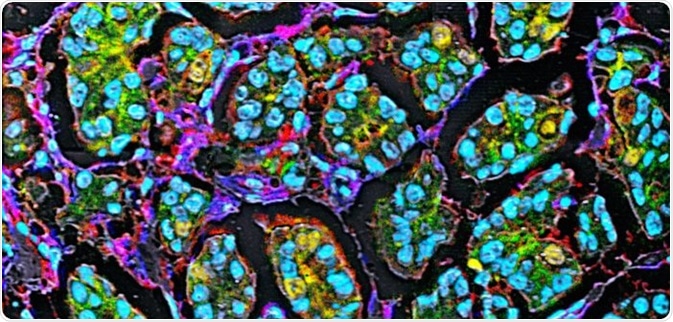
The use of cell lines lies at the base of experimental research in molecular biology at a large scale. Cell lines are generated artificially, grow continuously, and are instrumental in diagnosis and treatment discoveries. As such, they need no further introduction. As the basis of distinction, their primary categorization considers both morphological features and root tissue for isolation.
Stark differences between primary cells and the cell lines developed using them have, however, been indicated by large-scale research. Why are these in vitro biological ingredients such constitutive resources for research and development? What possible reasons are there for the gap in their applicability? For the Cell Line Development (CLD) industry, these questions have been recurring. This article discusses the improvements which have been made to streamline their applicability and reduce any bottlenecks.
Conflict Surrounding Cell Line Application
Today, scientists can choose from a variety of cell line repertoires, following decades worth of research regarding continuous cell lines which were considered to have phenotypic and genotypic homogeneity. Having been developed from 150 biological species, there are 3,600 cell lines available. CLD has started upon an entirely new journey, after beginning with mouse Sertoli cell line (MSC-1), HeLa, clonal cell lines, and Hepa1-6. Nowadays, researchers are given varying cell lines which have been artificially generated to the level that embryonic and umbilical cord stem cells are used for new CLD.
Researchers, on the other hand, are faced with the toughest challenge of handling cell lines. This can lead to wastage of resources and abnormality in results. Gurvinder Kaur et al (2012) demonstrated that mouse Sertoli cells had immunologic characteristics which were more important than those of MSC-1 lines. A loss of between 18% and 36% of phenotypic quality was indicated as lost by Hughes et al (2007), as a result of cross-contamination and misidentification.
In recent times, Chinese Hamster Ovary Cells (CHOs) have become more difficult to use for the synthesizing of “Biologics” – a class of Biopharmaceuticals. As a result, higher levels of mutations in cell lines, uncontrolled clonal selection within passages of cells, and limitations in transforming them for clinically relevant in vitro models are cited as the reasons for the lack of cell lines’ applicability.
Applicability of Cell Lines
In any case, for performing scientific research, cell lines remain the most ethically viable and cost-effective resources available. Their development was idealized for their genotypic and phenotypic homogeneity over recurring cell populations. In recent decades, the reasons that nearly all scientific developments have been based on cell lines are due to their viability and easy availability.
It isn’t surprising that they are used for vaccine development, antibody production, genetic function studies, drug testing, artificial skin development, and cancer cell growth studies, among others.
In order to find biomarkers for skin diseases, cancer, better visualization of tumor cells, and lung dysfunctions, there are new cell lines being continually developed. Since cellular homogeneity of nearly all human tissues is mimicked by cell lines, and they are able to create in vitro models, it remains imperative to secure and maintain cell lines.
New protocols and guidelines are issued each year by CLD companies. Thermo Fisher Scientific, Sigma Aldrich, The Horizon, and Lonza are companies which have developed and evolved cell lines in terms of cytogenetic variants continually.
The Way Forward
Given the conflicting results concerning the use of cell lines over primary cell lines, researchers have the difficult task of picking the cellular resource to use. The answer to this question is provided in both 3D cell culture and Cell Line Engineering (CLE) methods. The basis of these novel approaches is the procuration of human primary cells and/or animal cells from root tissues, which are then grown with selective media in all 3 dimensions.
Cells are allowed to form spheroids, which are sphere-shaped aggregates. For 3D cell cultures, growth conditions include using polymeric mats such as polystyrene mats, collagenous mats, polycarbonate-based ECM fibers, and artificially engineered in vitro substrates. Together, these are known as scaffolds.
Enabling CLDs to design cell lines, CLE is an advanced technology which uses CRISPR products. Using a great array of cell lines which are already available according to the research project requirements their collaborating clients have requested, Thermo Fisher Scientific is engineering new cell lines. This removes uncontrolled mutations and contamination, as well as making artificial organ growth, new treatments, and cancer cell studies more attuned to living human tissues.
Kolabtree
Kolabtree is the leading online marketplace for freelance scientists and researchers. Their global pool of 5,500+ freelance experts are typically PhD-qualified and are from institutions like MIT and Harvard University. Services offered include statistical analysis, scientific consulting, data analytics, scientific writing and literature search. Kolabtree has helped businesses around the world, including Volkswagen and Sage Publishing, access scientific expertise quickly and easily. The platform lets you choose a budget of your choice, and interact with freelancers before making a hire. It's free to post your requirement on the project and receive quotes from experts. Kolabtree’s freelancers have helped businesses develop a product, write a technical report, perform a data analysis, and more.
Kolabtree is a one-stop resource for entrepreneurs, businesses and research organizations to get quick help from experts at short notice.
Original piece written by Mahasweta Pal. Mahasweta Pal is a biotechnologist, with a major in Biomedical Engineering from Vellore Institute of Technology, India. She has served as an editor for journal publications in Elsevier, Wolters Kluwer Health and Royal Society for Chemistry.
Sponsored Content Policy: News-Medical.net publishes articles and related content that may be derived from sources where we have existing commercial relationships, provided such content adds value to the core editorial ethos of News-Medical.Net which is to educate and inform site visitors interested in medical research, science, medical devices and treatments.